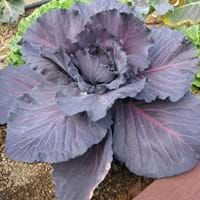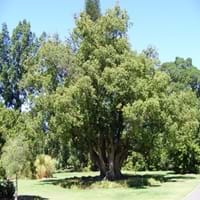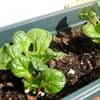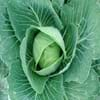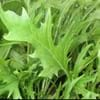Life Span
Annual
Perennial
Origin
Southern Europe, Western Europe, Mediterranean
India, China
Types
it is a type of cabbage
Bead tree
Habitat
agricultural areas
Forest margins, Roadsides
USDA Hardiness Zone
Not Available
8-15
Sunset Zone
A1, A2, A3, H1, H2, 1a, 1b, 2a, 2b, 3a, 3b, 4, 5, 6, 7, 8, 9, 10, 11, 12, 13, 14, 15, 16, 17, 18, 19, 20, 21, 22, 23, 24
H1, H2, 6, 7, 8, 9, 10, 11, 12, 13, 14, 15, 16, 17, 18, 19, 20, 21, 22, 23, 24
Habit
Rosette/Stemless
Oval or Rounded
Flower Color
Yellow
Lavender
Flower Color Modifier
Bicolor
Bicolor
Fruit Color
Not Available
Yellow
Leaf Color in Spring
Dark Green
Green, Dark Green
Leaf Color in Summer
Red, Purple
Dark Green
Leaf Color in Fall
Red, Purple, Burgundy
Dark Green
Leaf Color in Winter
Red, Purple, Burgundy
Dark Green
Leaf Shape
Spinach Type
Pinnate
Plant Season
Spring, Summer, Fall, Winter
Spring, Summer, Fall, Winter
Sunlight
Full Sun, Partial Sun
Full Sun, Partial Sun, Partial shade
Type of Soil
Loam, Sand
Clay, Loam, Sand
The pH of Soil
Acidic
Acidic, Neutral, Alkaline
Soil Drainage
Well drained
Average
Bloom Time
Spring, Late Spring, Early Summer
Early Spring, Spring, Late Spring
Tolerances
Drought
Cold climate, Drought, Pollution, Soil Compaction, Variety of soil types
Where to Plant?
Container, Ground, Pot
Ground
How to Plant?
Seedlings
Rooted stem cutting, Seedlings, Stem Planting
Plant Maintenance
High
Low
Watering Requirements
Do Not over Water, Keep ground moist
Average Water Needs, Medium, Requires regular watering, Requires watering in the growing season, Water daily during growing season, Water less during winter
In Summer
Lots of watering
Ample Water
In Spring
Moderate
Less Watering
In Winter
Average Water
Less Watering
Soil pH
Acidic
Acidic, Neutral, Alkaline
Soil Type
Loam, Sand
Clay, Loam, Sand
Soil Drainage Capacity
Well drained
Average
Sun Exposure
Full Sun, Partial Sun
Full Sun, Partial Sun, Partial shade
Pruning
Requires very little pruning
Prune if you want to improve plant shape, Remove damaged leaves, Remove dead leaves, Remove dead or diseased plant parts, Remove deadheads
Fertilizers
All-Purpose Liquid Fertilizer, Fertilize when new
Fertilize every year, fertilize in growing season, Less fertilizing
Pests and Diseases
Alternaria Leaf Spot, Anthracnose, Aphids, Bacterial soft rot, Beet armyworm, Black rot, Blackleg, Cabbage looper, Cabbageworm, Clubroot, Cutworms, Damping-off, Diamondback moth, Downy mildew, Flea Beetles, Powdery mildew, Red blotch, Ring spot, Root knot nematode, Slugs, Snails, Thripes, Watery soft rot, White mold, white rust
Insects, Red blotch
Plant Tolerance
Drought
Cold climate, Drought, Variety of soil types
Flower Petal Number
Single
Single
Foliage Texture
Bold
Coarse
Foliage Sheen
Matte
Glossy
Attracts
Not Available
Birds, Butterflies
Allergy
Not Available
Toxic
Aesthetic Uses
Not Available
Beautification, Landscape Designing, Showy Purposes
Beauty Benefits
Not Available
Not Available
Environmental Uses
Air purification
Absorbs greenhouse gases, Absorbs huge amounts of CO2, Air purification, Amazing growth rate, Erosion control, Food for birds, Food for insects, Forms dense stands, Nesting sites for birds, No fertilizer, pesticides, or herbicides needed, Prevent Soil Erosion, Shadow Tree, Shelter for wildlife, Soil protection, soil stabilisation, Used to establish native woodland, Very little waste, Wildlife, Windbreak
Medicinal Uses
Cancer, Detoxifies lever, Glucose
Not Available
Part of Plant Used
Leaves
Seeds, Stem, Tree trunks
Other Uses
Culinary use, Used As Food
Air freshner, Showy Purposes, Used as firewood, Used as Ornamental plant, Wood is used for making furniture, Wood is used for ship building, Wood is used fore making tools, Wood is used in construction, Wood log is used in making fences
Used As Indoor Plant
No
No
Used As Outdoor Plant
Yes
Yes
Garden Design
Bedding Plant, Container, Edible, Herb / Vegetable
Shade Trees
Botanical Name
BRASSICA oleracea 'Red Express'
MELIA azedarach
Common Name
Red Cabbage, Red Express Cabbage
Chinaberry Tree
In Hindi
लाल पत्ता गोभी
Chinaberry ट्री
In German
Rotkohl
Chinaberry -Baum
In French
Chou rouge
Chinaberry Arbre
In Spanish
Repollo rojo
Chinaberry Arbre
In Greek
Κόκκινο λάχανο
chinaberry Δέντρο
In Portuguese
Red Cabbage
azederaque
In Polish
Czerwona kapusta
azederaque
In Latin
Brassica Rubrum
Chinaberry ligno
Phylum
Magnoliophyta
Magnoliophyta
Class
Magnoliopsida
Magnoliopsida
Order
Brassicales
Sapindales
Family
Brassicaceae
Meliaceae
Clade
Angiosperms, Eudicots, Rosids
Angiosperms, Eudicots, Rosids
Tribe
Not Available
Melieae
Subfamily
Not Available
Meloideae
Number of Species
Not Available
